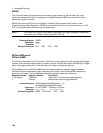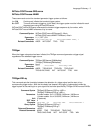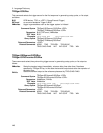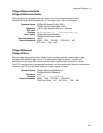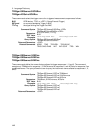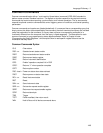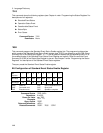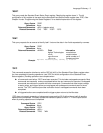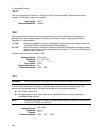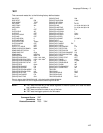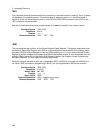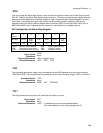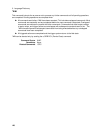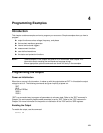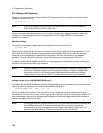Language Dictionary - 3
115
*ESR?
This query reads the Standard Event Status Event register. Reading the register clears it. The bit
configuration of this register is the same as the Standard Event Status Enable register (see *ESE). See
Chapter 4 under “Programming the Status Registers” for a detailed explanation of this register.
Query Syntax
*ESE?
Parameters
None
Returned Parameters
<NR1> (register value)
Related Commands
*CLS *ESE *ESE? *OPC
*IDN?
This query requests the ac source to identify itself. It returns the data in four fields separated by commas.
Query Syntax
*ESE?
Parameters
None
Returned Parameters
<AARD> Field Information
Agilent Technologies manufacturer
xxxxA model number
nnnnA-nnnnn serial number or 0
<R>.xx.xx firmware revision
Example
Agilent Technologies, 6812B, 0, A.00.01
*OPC
This command causes the interface to set the OPC bit (bit 0) of the Standard Event Status register when
the has completed all pending operations. (see *ESE for the bit configuration of the Standard Event
Status registers.) Pending operations are complete when:
u all commands sent before *OPC have been executed. This includes overlapped commands. Most
commands are sequential and are completed before the next command is executed. Overlapped
commands are executed in parallel with other commands. Commands that affect output voltage
or state, relays, and trigger actions are overlapped with subsequent commands sent to the ac
source. The *OPC command provides notification that all overlapped commands have been
completed.
u all triggered actions are completed and the trigger system returns to the Idle state.
*OPC does not prevent processing of subsequent commands but Bit 0 will not be set until all pending
operations are completed. The query causes the interface to place an ASCII "1" in the Output Queue
when all pending operations are completed.
Command Syntax
*OPC
Parameters
None
Query Syntax
*OPC?
Returned Parameters
<NR1>
Related Commands
*TRIG *WAI




